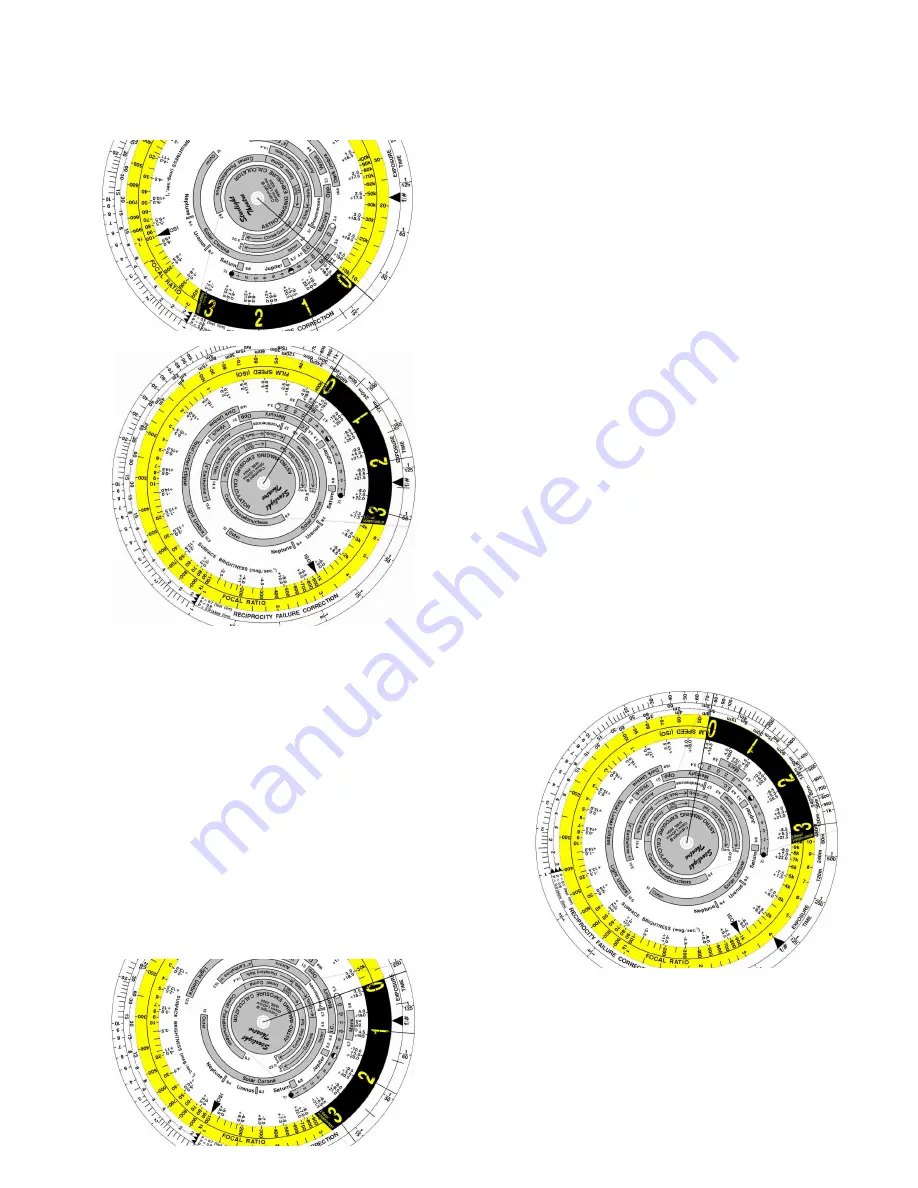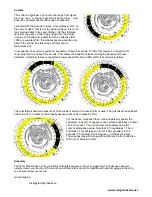
www.starlight-theatre.net
WHIZ WHEEL - Astro-imaging Exposure Calculator
This tutorial extends our instruction booklet on the use of the Whiz Wheel Exposure Calculator.
Mars
Let us determine the optimal exposure for Mars. For this
example let’s start with a telescope using eyepiece projection
on relatively fine grain film (ISO 100). Lets say the projection
optics result in an effective focal ratio of 22. Because Mars is
an extended object, the actual aperture does not matter.
However, a larger aperture at the same focal ratio will result
in a larger image on the film.
Mars has a narrow range of surface brightness (3.9 to 4.7
mag./sec.
2
) and results in a calculated exposure ranging
from 1/30 seconds to 1/15 seconds. This exposure is
relatively slow, but it is long enough to permit a manual
shutter over the front of the telescope that will minimize the
vibration due to a camera’s shutter. To take the picture,
cover (but do not touch) the aperture of the telescope with a
dark card, open the camera shutter for a few seconds (to
allow the shutter induced vibrations to dampen out), very
quickly wave the card out away from the aperture, then back
again. Then close the camera shutter.
Unfortunately if the atmospheric seeing is not very good, the
image will be constantly moving. A much faster exposure
time is needed to freeze this motion. This may be done in
two ways: use faster film or more sensitive detector or use a
shorter focal ratio. A shorter focal ratio will also result in a
smaller image. Let us see what will result with an ISO 1000
film (or effective ISO for a detector) and a focal ratio of 10.
The new exposure is about 1/1000 second at the end of the
exposure scale. But if you need to, you may extrapolate to shorter exposures. Remember that the shutter of your
electronic camera may not be able to move this fast, requiring you to stop-down your telescope aperture or use
eyepiece projection to bring the exposure into a practical range.
Moon
The Moon is very difficult to image because of the range in local
surface brightness. The Calculator only gives the average
brightness over the Moon’s apparent disk. If you try to image the
full Moon using ISO 1000 film at f/4, we get a bizarre exposure of
75 seconds (?). Actually, this is beyond the 1/1000-second limit.
More correctly, it is 75/1000 x 1/1000 = 75 millionths of a second.
Film and detectors behave differently at such short exposures.
Film suffers a form of reciprocity failure and no commercial
electronic detectors and film cameras have effective shutter
speeds this fast.
A better image results with a more balanced set of parameters.
Try, ISO 100 at f/10.
This gives an exposure of about 1/250 second and is much
more reasonable. At first and last quarter, the range in
brightness can be more than factor of two between the bright
highlands and the darker mare, or from near the limb (where
the Sun would be high in the lunar sky) to the terminator with
long shadows. Depending on your needs, you may have to
start with the calculated exposure and experiment to get the
best exposure for your purpose.


